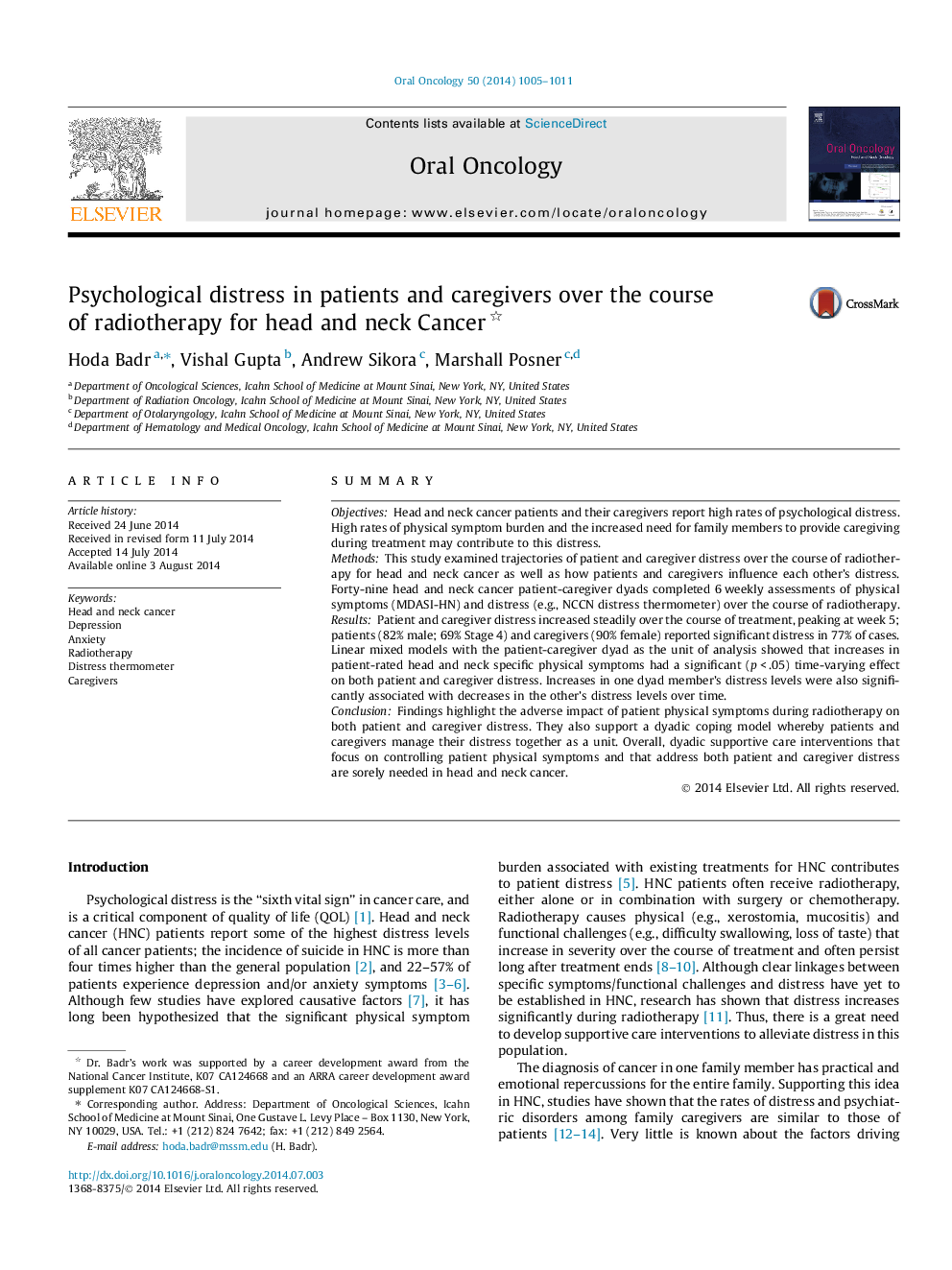| Article ID | Journal | Published Year | Pages | File Type |
|---|---|---|---|---|
| 3164057 | Oral Oncology | 2014 | 7 Pages |
SummaryObjectivesHead and neck cancer patients and their caregivers report high rates of psychological distress. High rates of physical symptom burden and the increased need for family members to provide caregiving during treatment may contribute to this distress.MethodsThis study examined trajectories of patient and caregiver distress over the course of radiotherapy for head and neck cancer as well as how patients and caregivers influence each other’s distress. Forty-nine head and neck cancer patient-caregiver dyads completed 6 weekly assessments of physical symptoms (MDASI-HN) and distress (e.g., NCCN distress thermometer) over the course of radiotherapy.ResultsPatient and caregiver distress increased steadily over the course of treatment, peaking at week 5; patients (82% male; 69% Stage 4) and caregivers (90% female) reported significant distress in 77% of cases. Linear mixed models with the patient-caregiver dyad as the unit of analysis showed that increases in patient-rated head and neck specific physical symptoms had a significant (p < .05) time-varying effect on both patient and caregiver distress. Increases in one dyad member’s distress levels were also significantly associated with decreases in the other’s distress levels over time.ConclusionFindings highlight the adverse impact of patient physical symptoms during radiotherapy on both patient and caregiver distress. They also support a dyadic coping model whereby patients and caregivers manage their distress together as a unit. Overall, dyadic supportive care interventions that focus on controlling patient physical symptoms and that address both patient and caregiver distress are sorely needed in head and neck cancer.
